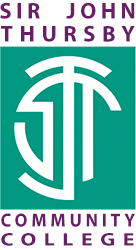Topic 13 Year 7 Mathematics
| Mathematics | |||
| Topic | Prime Factor decomposition | ||
| No of lessons | 8 | ||
| When is it happening | Term 3 Year 7 | ||
| What will students learn | In this unit, students revisit the composition of numbers developed in unit 3. Student use the “lots of” representation to find the prime factor decomposition of a positive integer. The uniqueness of the prime number decomposition, for which indices notation is used, is explored. This is used to show properties of particular numbers e.g. if a number is a square or cube number and therefore identify square and cube roots. Prime factorisation is used to determine the highest common factor and lowest common multiple of two or more numbers. Different methods for finding these are introduced and students are required to reason why different methods work. | ||
| Key Knowledge that students should know at the end of 'Topic' | This is the knowledge that students will meet for the first time in this topic |
Indices Index notation for positive integer powers beyond two are introduced. Students explore conjectures involving powers. The purpose of this is to give students the opportunity to practice using the notation and to develop their mathematical thinking. Formal conclusions are not required. Lesson 2: Prime building blocks Students ‘build’ numbers by considering products. This is an opportunity to practice using index notation and to sew the seeds for prime factorisation which is formally introduced in the next lesson. Lesson 3: Prime factorisation Students are introduced to the fundamental theorem of arithmetic Students are given the opportunities to connect array representations, factor tree diagrams and ‘lots of’ diagrams. Lesson 4: Prime deductions This lessons prepares students for the work to follow on HCF. Students are required to identify factors using the prime factorisation of a number. Lesson 5: Highest common factor Students are given the opportunity to revisit common factors. The HCF is introduced. Students explore common factors through cutting up arrays into squares. This allows students to connect the HCF to a geometrical visual. We see that all common factors are factors of the HCF. Lesson 6: HCF and prime factors Prime factorisation is used to identify common factors and the HCF. Venn diagrams are used to sort prime factors and to help with this identification. Lesson 7: Lowest common multiple Students are given the opportunity to revisit common multiples. The LCM is introduced. Students explore common factors through building squares with rectangles. This allows students to connect the LCM to a geometrical visual. We see that all common multiples are multiples of the LCM. Lesson 8: LCM and prime factors Prime factorisation is used to identify common multiples and the LCM. |
|
| This is knowledge that students may have met before but will need to deepen their understanding |
Finding multiple by using the times table Using factor pairs to find factors |
||
| Key Skills that students should be able to demonstrate at the end of 'Topic' | This is the skills that students will meet for the first time in this topic | Students are introduced to the fundamental theorem of arithmetic. Students are given the opportunities to connect array representations, factor tree diagrams and ‘lots of’ diagrams. Lesson 4: Prime deductions | |
| This is skills that students may have met before but will need to develop | Using timetable and multiplication facts to find factors and multiples | ||
| Key vocabulary that students should know and understand | Integer, number, digit, negative, decimal, multiplication, division, remainder, operation, estimate, power, roots, factor, multiple, primes, square, cube, even, odd | ||
| The Big Question | What is prime factor decomposition and how could it be useful? | ||
|
Key questions that students should be able to answer at the end of the 'Topic' |
What is the purpose of indices? | ||
| What is a product and how do they impact numbers? | |||
| How do I write a number as a product of prime factors? | |||
| What can I deduce from prime factorisation? | |||
| How can I find the highest common factor of two numbers? | |||
| How can prime factors help find the highest common factor? | |||
| How do I find the lowest common multiple of numbers? | |||
| How can prime factors help find the lowest common multiple? | |||
